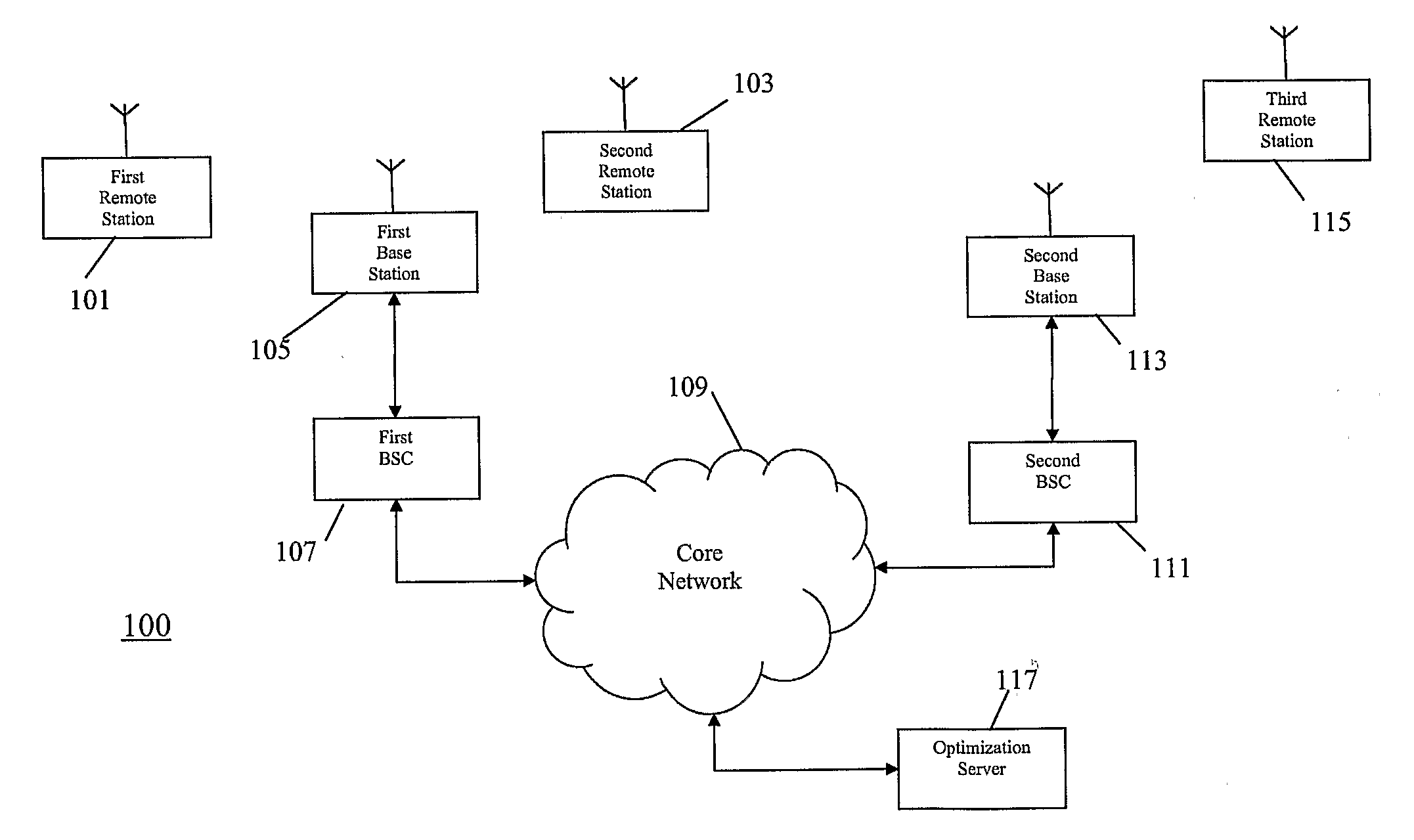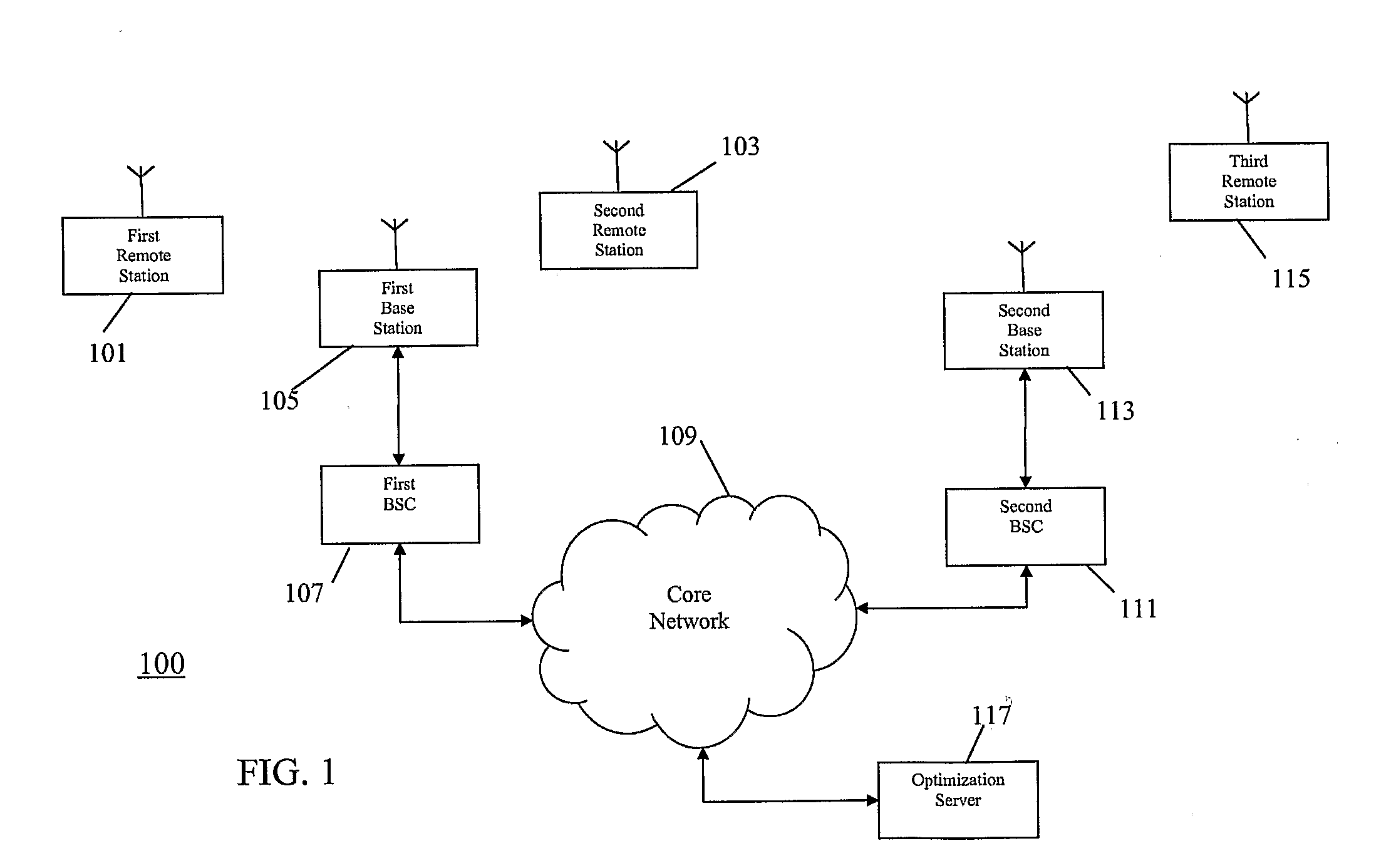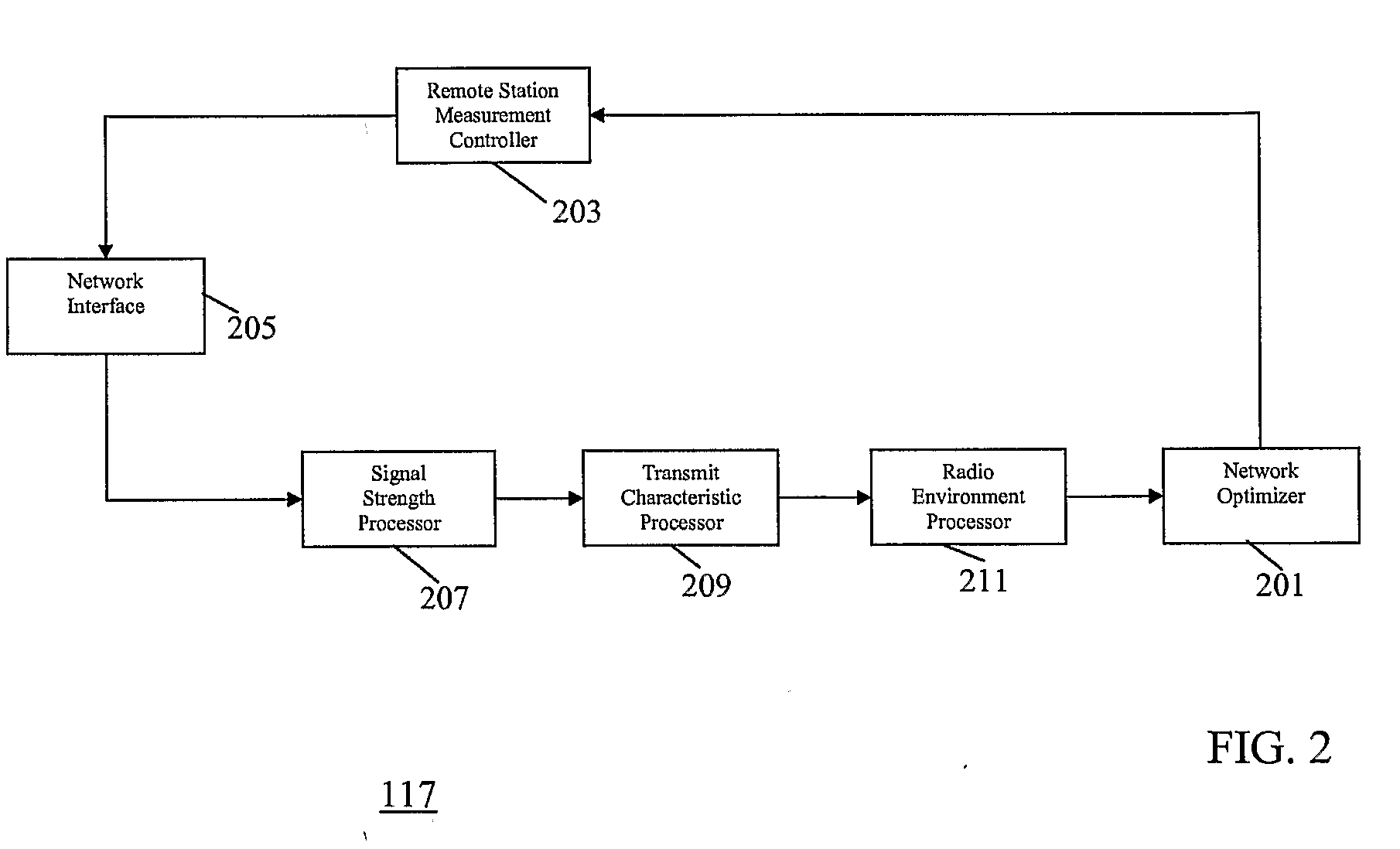Apparatus and method for determining a downlink transmit power characteristic in a cellular communication system
a technology of transmit power characteristic and cellular communication system, applied in electrical apparatus, power management, network topologies, etc., can solve the problems of inability to easily update the current approach to provide new measurements, inability to introduce any enhanced functionality to conventional base stations and network infrastructure, and inability to provide new measurements. to achieve the effect of reducing the need for information and improving/or facilitating the determination of transmit power characteristics
- Summary
- Abstract
- Description
- Claims
- Application Information
AI Technical Summary
Benefits of technology
Problems solved by technology
Method used
Image
Examples
Embodiment Construction
[0055]The following description focuses on embodiments of the invention applicable to a GSM cellular communication system. However, it will be appreciated that the invention is not limited to this application but may be applied to many other cellular communication systems including for example UMTS cellular communication systems.
[0056]FIG. 1 illustrates an example of a cellular communication system 100 in which embodiments of the invention may be employed.
[0057]In a cellular communication system, a geographical region is divided into a number of cells each of which is served by a base station. The base stations are interconnected by a fixed network which can communicate data between the base stations. A remote station (e.g. a User Equipment (UE), a subscriber unit or a mobile station) is served via a radio communication link by the base station of the cell within which the remote station is situated.
[0058]As a remote station moves, it may move from the coverage of one base station t...
PUM
 Login to View More
Login to View More Abstract
Description
Claims
Application Information
 Login to View More
Login to View More - R&D
- Intellectual Property
- Life Sciences
- Materials
- Tech Scout
- Unparalleled Data Quality
- Higher Quality Content
- 60% Fewer Hallucinations
Browse by: Latest US Patents, China's latest patents, Technical Efficacy Thesaurus, Application Domain, Technology Topic, Popular Technical Reports.
© 2025 PatSnap. All rights reserved.Legal|Privacy policy|Modern Slavery Act Transparency Statement|Sitemap|About US| Contact US: help@patsnap.com



